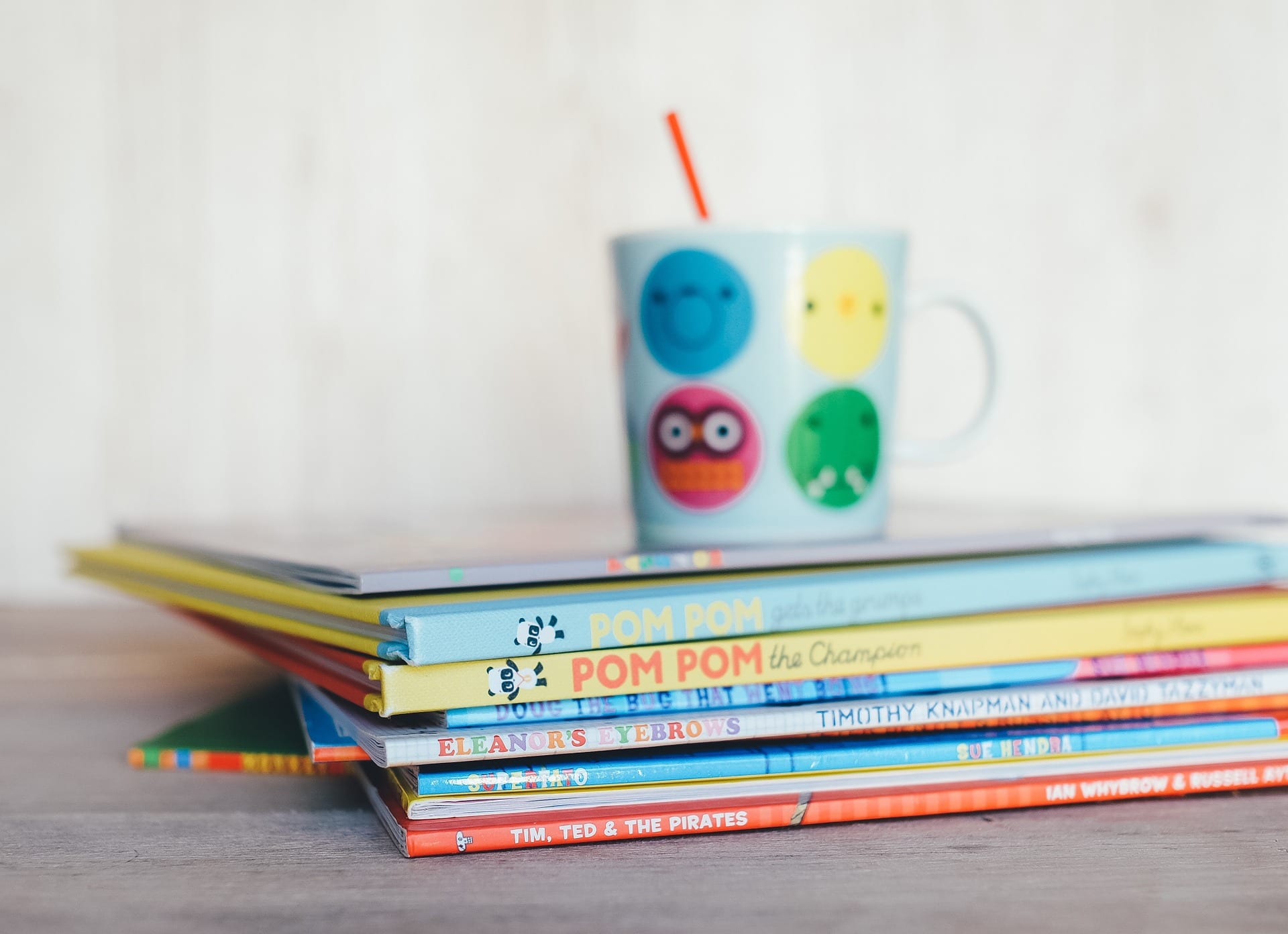By: Sara Croymans, MEd, AFC
Moving to a different home, community, and school as a result of a PCS can be a new, sometimes scary, experience for military children. Families can use children’s literature to introduce the transition of moving and help children think about ways to manage their feelings and navigate the challenges that come with moving. Identifying with a book’s characters can help children realize that they are not the only one having to deal with managing a move (Lowe, 2009).
The University of Central Florida’s Technical Assistance and Training System suggests that one of the best ways to prepare children to navigate transitions is through preparation … and books are a useful tool. They suggest these tips when using books:
1. Select stories that are similar to the transitions the child is or will be encountering or concerned about.
2. After reading stories about transitions discuss with the child the similarities and differences with the child’s current or new environment.
3. Use parts of the story to help the child talk about their feelings related to the transition.
4. Use children’s stories to support transitions before, during and after the transitions occur.
5. If appropriate, help the children participate in activities or practice skills they are learning to support the transitions.
I found many lists of children’s books online related to moving. Check out the list below and think about how you might make these available at your installation or with the military families you work with. Perhaps add the books to the installation’s community or school library, have the books available at your child care facility, or share the books with transitioning parents to read with their children.
Alexander, Who’s Not (Do You Hear Me? I Mean It!) Going to Move by Judith Viorst, Ray Cruz & Robin Preiss Glasser. (1998). For ages 4+. Angry Alexander refuses to move if it means having to leave his best friend, his babysitter and the dog next door.
Army Brats by Daphne Benedis-Grab. (2017). For ages 8-13. The Bailey kids’ face the challenges of moving to an army base, including dealing with the local bully and solving the mystery of a haunted building.
Augustine by Melanie Watt. (2006). For ages 3-7. Augustine, the penguin, misses her friends, grandparents and bedroom as she moves from the South Pole to the North Pole with her family. She connects with her new classmates at school through art.
Before I Leave by Jessixa Bagley. (2016). For ages 2-6. A little hedgehog struggles to say goodbye to her best friend when her family moves away.
Berenstain Bears Moving Day by Stan Berenstain & Jan Berenstain. (1981). For ages 3-7. The Bear family moves from the mountains to their new tree house in Bear County.
Big Ernie’s New Home: A Story for Young Children Who Are Moving by Terese Martin. (2006). Big Ernie, a cat, learns how to deal with sadness, confusion and worry as he and his owner Henry move to Arizona.
Bird, Balloon, Bear by Il Sung Na. (2017). For ages 2-5. Bird is shy and wants to become friends with Bear.
Boomer’s Big Day by Constance McGeorge. (1996). For ages 2-6. This book provides a moving day perspective from Boomer the dog.
Elena’s Big Move by Sarah Olivieri. (2009). For ages 4-8. Nine year old Elena’s family is moving from Puerto Rico to Indiana. She uses photos to make a scrapbook to preserve memories of her old home as well as of her new home to create new memories.
Flexible Wings by Veda Stamps. (2015). For ages 8-12. Summer, an eleven year old military kid whose family frequently moves, dreams of swimming in the Olympics. The author uses the themes of sports, community support, and volunteerism as a way to help children and their families through difficult times.
Goodbye House by Frank Asch. (1989). For ages 2+. Bear is sad to say goodbye to his house but finds many happy memories to be treasured for the future.
Home Is Where Our Hero Is by Bridgett Plat (2016). This book about military PCS moves by the author of Daddy’s Deployed is available in a personalized or non-personalized version.
Home is Where the Army Sends You by Rebekah Sanderlin & Melissa Davis. (2014). For ages 5-10. The Applebottoms are an Army family excited to relocate to Fort Bragg, North Carolina. This book helps children visualize where they are going, thereby relieving some of the anxiety associated with relocation.
Home is Where The Marine Corps Sends You by Rebekah Sanderlin & Melissa Davis. (2014). For ages 5-10. The Oakwoods are a Marine family excited to move to Camp Lejeune, North Carolina. This book helps children visualize where they are going, thereby relieving some of the anxiety associated with relocation.
Home is Where the Navy Sends You by Rebekah Sanderlin & Melissa Davis. (2015). For ages 5-10. Join young Amaya Roberts as she learns about her mother’s newest military orders to Naval Air Station Pensacola, Florida.
House that Wanted a Family, The by Susan Spence Daniel. (2012). For ages 4-8. This story tells about a house that is for sale and sits empty waiting for a family.
I’m Not Moving Mama! by Nancy White Carlstrom. (1999). For ages 3+. Little Mouse learns that despite despite leaving some things behind there will be many things his family will share in their new home and he realizes the most important thing is being together.
Kids! We Have PCS Orders! by James Thomas. (2018). For ages 3-7. This picture book tells the story of a how a military family prepares their kids mentally for a move.
Let’s Move Together by Carol M. Schubeck. (2000). For ages 5-11. Tom, a turtle, walks children through feelings, thoughts, and action stages related to moving.
Lion’s Pride on the Move by Grace Anne Remey. (2013). This story, written from a 9 year old’s perspective, shares feelings of excitement, sadness and fear related to moving while providing ideas to make the transition of moving fun!
Little Critter: We Are Moving by Mercer Mayer. (2012). Little Critter is nervous about his family’s move to a new house.
Little Daisy’s Worst Best Day (We Serve Too!) by Kathleen Edick & Paula Johnson. (2012). For ages 3+. A sister and brother moving far away need to leave their dog Daisy with an older couple. Both Daisy and the children learn to discover their new worlds and make new friends.
Lucy & the Little Blue Car by Eugenia Guilmartin. (2012). Lucy is a German Shepherd about to begin a cross-country move in a new car with a new mom, beginning a new life. The theme of comfort and continuity reinforces the message that every new place can be “home.
Military Brats: The Worst Best Move Ever by Yuki & Carlos Smiley. (2016). This is the story of a little girl who is growing up in a military family and every time she adjusts to a move her family has to move again and she has to adjust again.
Military Kids Speak; My life as a military child by Julie Rahm. (2011). For ages 9-12. This book includes essays written by military kids about the perks and privileges, as well as the hardships and heartaches of military life and as in-depth interviews with famous former military kids like Justice Leah Ward Sears, Newt Gingrich, Shaquille O’Neal, and Mark Hamill.
Mouse Moves House by Phil Roxbee Cox. (2006). For ages 0-5. Mack the mouse needs to pack his things and move to his new house, and luckily, he gets help from his friend Jack.
Moving Again Mom (Uncle Sam’s Kids) by Angela Sportelli-Rehak. (2004). For ages 4-8. Lil’M’s family is moving across the country to live on a new military base. She is worried that she will miss her best friend, and worried that it will be hard to make new friends.
Moving Book: A Kids’ Survival Guide, The by Gabriel Davis. (2008). This book can help you make an adventure out of moving. It offers advice and activities to help you prepare for a move and suggestions for making your new location feel like home.
Moving House by Anne Civardi & Stephen Cartwright. (2005). The Sparks family discover that moving to a new house is hard work but Sam and Sophie are excited to meet new people and have their own rooms.
New Home for Allie, A by Carrie Daws. (2018). Allie, a young giraffe, is moving with her family from Kenya to Somalia due to her dad’s reassignment with the Animal Jungle Patrol.
New House, A by Jill Wenzel (2011). For ages 4-10. The activity book features puzzles and games that address the process of and emotions surrounding buying and moving to a new home.
Nonni’s Moon by Julia Inserro. (2018). For ages 3-8. Beannie lives across the world from her Nonni and misses her every day but they figure out a way to send messages through the moon.
Piper Reed, Forever Friend by Kimberly Willis Holt. (2012). For ages 8+. Piper is excited to move to a new state and catch up with old friends. But the move doesn’t go as smoothly as she expected: Piper has trouble feeling accepted in her new surroundings.
Remember When: My Life as a Military Child by Tana Hair. (2011). For ages 5-10. This book is designed for military children so they can keep a living record of their childhood by documenting their schools, homes, friendships and anything else that they want and treasure.
Way I Feel, The by Janan Cain. (2000). For ages 2-8. This book uses colorful, and expressive images which go along with simple verses to help children connect words and emotions.
We’re Moving Today! A Moving Story by James Thomas. (2014). For ages 3-7. Come join the adventure with a family that is moving to a new house and see how they work together through their journey.
We’re Moving by Heather Maisner. (2004). For ages 4+. This picture book series helps prepare young children for new situations. The series stars six-year-old Amy and her little brother, Ben, who—like all preschool children—have mixed feelings about first-time experiences.
Who Will Be My Friends? by Syd Hoff. (1985). For ages 6-8. Freddy moves to a new neighborhood and spends the entire book looking for new friends – until he finally finds them.
Will I have a Friend? By Meriam Cohen. (1967). Jim faces his fears of making a friend on his first day of kindergarten.
Year My Parents Ruined My Life, The by Martha Freeman. (1997). For ages 10+. Twelve-year-old Kate has her entire world turned upside-down when she has to move from California to snowy Pennsylvania, where she tries to adjust to a new climate, a new school, and new friends.
Do you have favorite children’s books related to PCSing that didn’t make this list? Please share by commenting on this blog.
Resources:
Lowe, D. F. (2009). Helping Children Cope through Literature. In Forum on Public Policy Online (Vol. 2009, No. 1). Oxford Round Table. 406 West Florida Avenue, Urbana, IL 61801. Retrieved from https://files.eric.ed.gov/fulltext/EJ864819.pdf
University of Central Florida. 2009 Technical Assistance and Training System TATS eUpdate on Transition “Using Children’s Literature to Support Successful Transitions.”
Writers Biography
 Sara Croymans, MEd, AFC, University of Minnesota Extension Educator, member of the OneOp Family Transitions team, military spouse, and mother.
Sara Croymans, MEd, AFC, University of Minnesota Extension Educator, member of the OneOp Family Transitions team, military spouse, and mother.
Photo source: Adobe Stock















